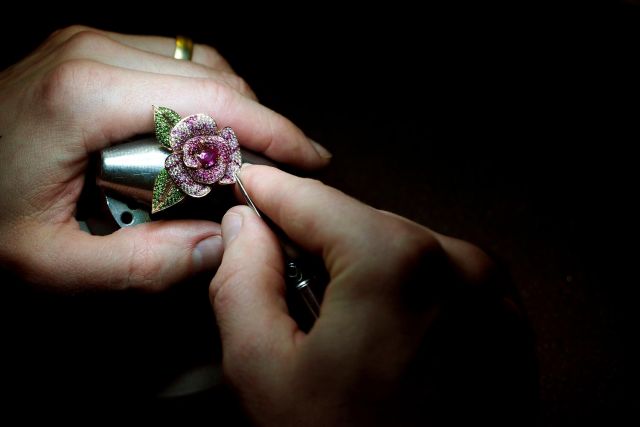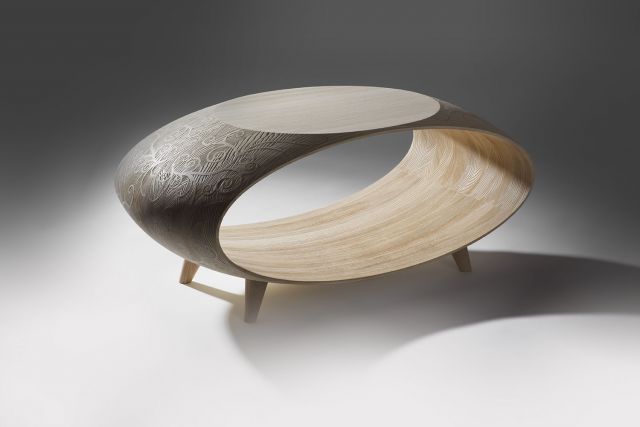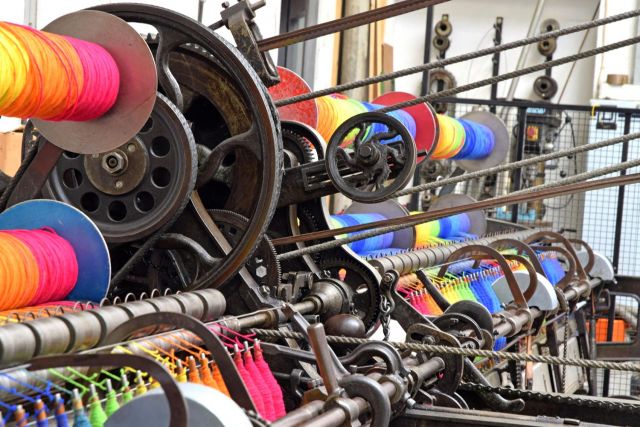This is a 175 mm full tang construction, European style chef knife. It has fully forged geometry with a differentially hardened blade. It is balanced at the heel of blade, fully tapered through both handle and blade, and sharpened on Japanese whetstones.
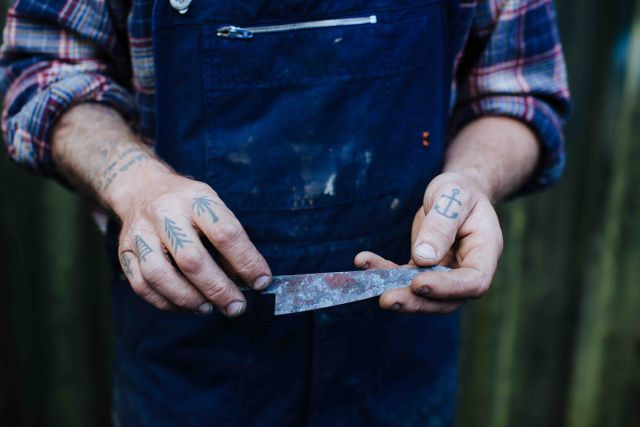
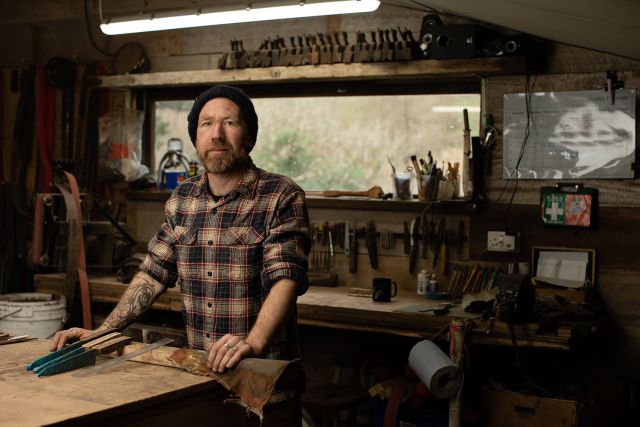
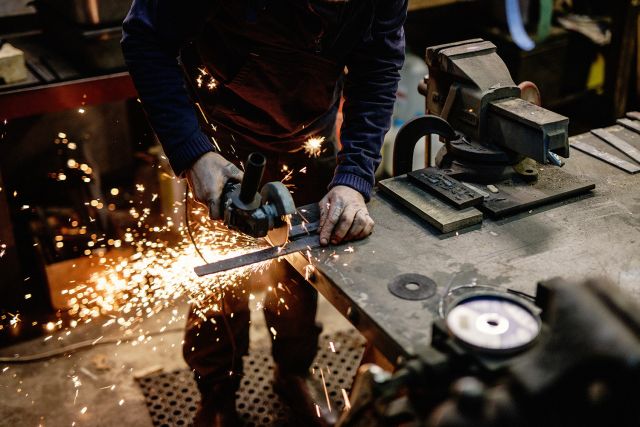
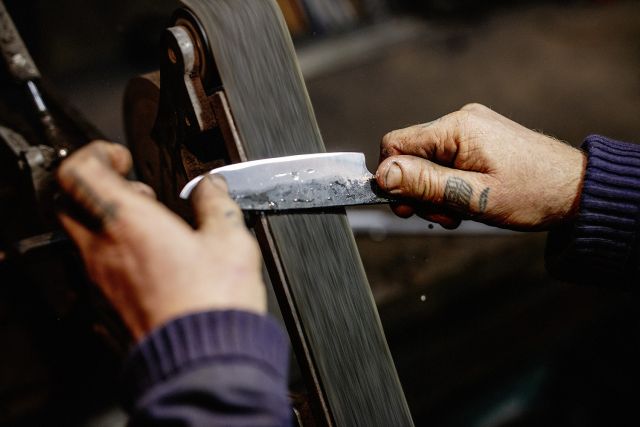
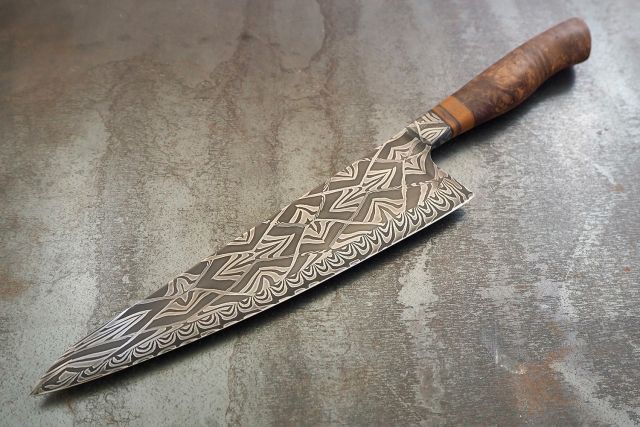
Sam Gleeson
- Thisiswhatido
- Knife maker
- Milltown Malbay, Ireland
- Rising Star
The stories in the blades
- • Sam makes culinary knives with vintage materials
- • He is fascinated by the story of materials
- • He inherited his love of making from his father
Thanks to a curious mind, Sam Gleeson has experimented a lot and travelled different paths throughout his life. Deeply influenced by his father, who sparked a love of tools and making in him from a very young age and supported him all along, Sam first studied environmental sciences. He cultivated a love for art all his life and has been on numerous trips around the world, before landing in Ireland. Here, through Homo Faber Guide artisan Fingal Ferguson, a friend who later became his mentor, Sam discovered the primeval craft of bladesmithing. He began to study with some of the most experienced masters in knife making. Within a few years he has become a reputed knife maker, sought after by great chefs and collectors. Sam's approach is to use discarded or antique materials to forge new blades and handles, thus making knives that carry a story within them.
Read the full interviewWorks
Photo: ©Sam Gleeson

Photo: ©Sam Gleeson
This is a 190 mm in-house laminated steel blade with a kurouchi finish. It has a hidden tang handle construction, using an oak dowel to hold the blade. There is a balance of weight at the curve of the heel. The handle is shaped to give right hand grip preference. The blade was sharpened on Japanese whetstones.

Photo: ©Sam Gleeson
This is a general purpose 180 mm Japanese style blade. It is hand forged and profiled from mono steel with differential hardening of the blade. It has a hidden tang handle construction, with balance of the blade at the curve of the heel. Full distal taper was forged into the blade length, which was sharpened on Japanese whetstones.

Photo: ©Sam Gleeson
This is a 175 mm in-house laminated steel knife. The layers are made from wrought iron cartwheel rims and old plough tines, with a 26C3 high carbon steel cutting edge. The knife was fully forged and profiled with distal taper throughout the blade. It has a traditional style horn and wood handle with a hidden tang construction, shaped with right handed bias. A full acid etch gives pattern contrast. The blade was sharpened on Japanese whetstones.

Photo: ©Sam Gleeson
The blade of this knife was constructed using twisted multiple bars of Damascus steel, forge-welded together. A full distal taper runs the length of the blade with weight balancing on the integral bolster. The handle is constructed in hidden tang style, with a traditional Western grip. A full acid etch gives pattern contrast. The blade was sharpened on Japanese whetstones.





